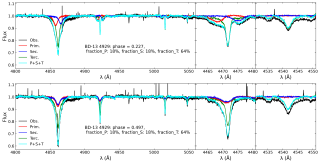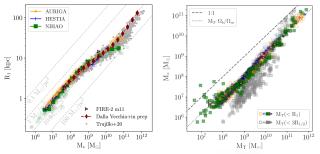El telescopio MAGIC detecta la emisión de rayos gamma de mayor energía conocida hasta la fecha en el púlsar del Cangrejo.
El telescopio de rayos gamma MAGIC ha detectado la emisión pulsada de más alta energía emitida por el púlsar situado en el centro de la Nebulosa del Cangrejo. Los intensísimos campos magnéticos y gravitatorios presentes en los púlsares hacen de estos objetos laboratorios únicos para estudiar el comportamiento de la materia bajo condiciones extremas imposibles de reproducir en la Tierra.
El telescopio MAGIC logró detectar la emisión pulsada de rayos gamma por encima de 25 Gigaelectronvoltios del púlsar del Cangrejo, en una campaña de observación realizada en el invierno de 2007. La detección fue posible gracias a una mejora innovadora de la electrónica del telescopio que permitió disminuir el umbral de observación en un factor 2, lo que supone todo un avance dentro del campo de la astronomía gamma con telescopios terrestres. Además, MAGIC ha conseguido determinar la energía a partir de la cual la emisión del púlsar desaparece abruptamente, resultando ser ésta de unos 20 Gigaelectronvoltios. Un valor tan alto era inesperado, e indica que la emisión gamma ocurre lejos de la superficie de la estrella de neutrones. Este descubrimiento, que de por sí excluye uno de los tres modelos básicos de emisión de radiación pulsada, será crucial a la hora de revisar los modelos teóricos existentes hasta la fecha.
MAGIC es un telescopio de rayos gamma con un espejo de 17 metros de diámetro, lo que le convierte en el mayor telescopio de su clase en el mundo. La construcción y explotación científica de MAGIC es el fruto de una gran colaboración internacional en la que participan más de 150 científicos, principalmente de España, Alemania e Italia. El telescopio está situado en el observatorio del Roque de los Muchachos del Instituto de Astrofísica de Canarias (La Palma). Actualmente, la colaboración MAGIC está finalizando la puesta en marcha de un segundo telescopio, MAGIC-II, que comenzará en breve a realizar observaciones en modo estereoscópico junto al telescopio ya existente.
En lo que se refiere a la productividad de los proyectos, es necesario señalar aquí que esta actividad investigadora ha resultado durante el año 2008 en una producción científica que ha alcanzado nuevos máximos tal y como podemos observar en la tabla de la página siguiente, en la que se refleja la producción científica del IAC en los últimos diez años. Igualmente, en el gráfico se observa la progresión en ese intervalo de tiempo de las publicaciones en las Revistas Internacionales con árbitro.


